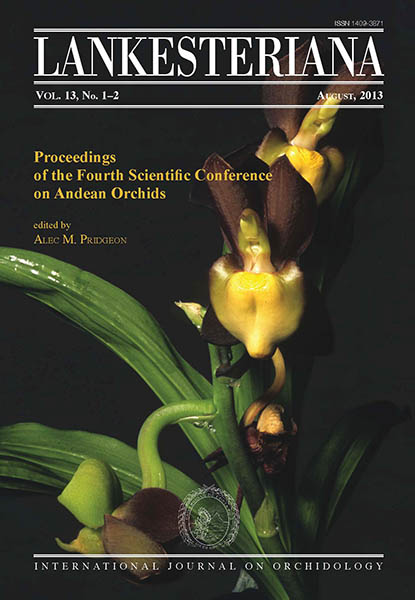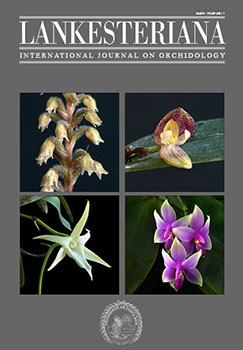Orchid conservation: the next ten years
DOI:
https://doi.org/10.15517/lank.v0i0.11545Palabras clave:
seed storage, habitat, reintroduction, germination, collectionResumen
In 1996 the IUCN/SSC Orchid Specialist Group published a Status Survey and Conservation Action Plan that included a number of recommendations designed to address the problem of a projected imminent and rapid decline of species. Orchids remain subject to a multiplicity of threats in their natural habitats and, in addition to the usual suspects of habitat loss and land conversion, climate change has exerted a measurable effect on some orchid populations. Collection of orchids for traditional medicine is having a significant effect both within China and surrounding countries. Some progress has been made in achieving the targets set for Red Listing of endangered species in some countries, but other countries are lagging behind. In addition to successful initiatives in preserving natural habitats, a number of projects around the world have demonstrated that it is possible both to bring endangered species into cultivation and successfully reintroduce them into the wild. Orchid Seed Stores for Sustainable Use, with its goal of storing seeds representing a minimum of 1000 orchid species in institutes in at least 30 countries over the next five years, provides an example of what can be achieved by a small, dedicated group determined to share their technical expertise and develop a deeper understanding of the underlying science. There is, however, also an urgent need to promote awareness in the wider community about the importance of all sorts of biodiversity (not only orchids) through educational programs and involve people from as wide a range of backgrounds as possible.Descargas
Los datos de descargas todavía no están disponibles.
Descargas
Cómo citar
Seaton, P., Kendon, J. P., Pritchard, H. W., Murti Puspitaningtyas, D., & Marks, T. R. (2013). Orchid conservation: the next ten years. Lankesteriana: International Journal on Orchidology, 13(1-2). https://doi.org/10.15517/lank.v0i0.11545
Número
Sección
Artículos
Licencia
Conforme con las Políticas de Acceso Abierto promovidas por la Universidad de Costa Rica, los derechos de autor de todos los artículos publicados en Lankesteriana se encuentran bajo una licencia Creative Commons y pueden ser descargados gratuitamente. Los derechos de autor y de publicación pertenecen a la revista bajo la licencia CC BY-NC-ND 3.0 CR.
Before the publication of the materials submitted by the author(s) in LANKESTERIANA, the author(s) hereby assign all rights in the article to the Lankester Botanical Garden.





